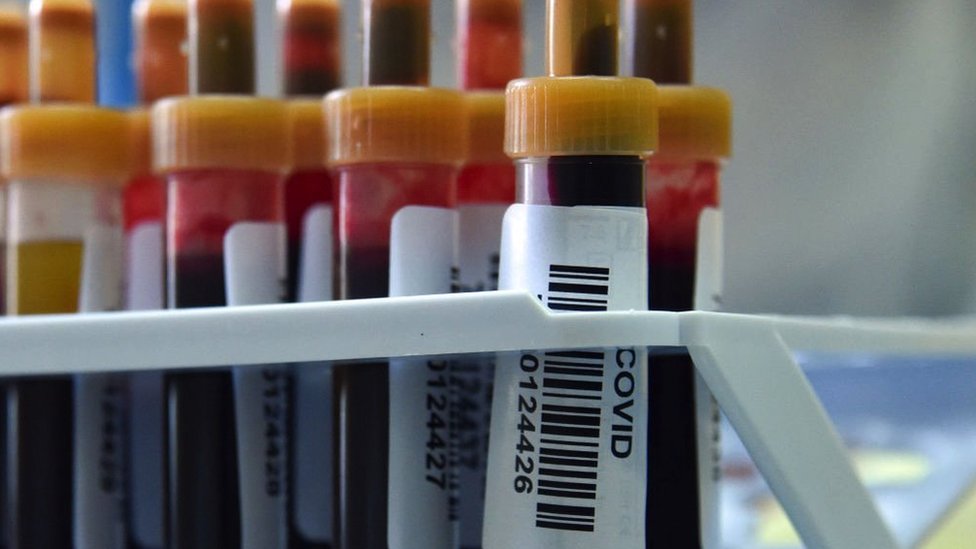

Rinse both sides of the slide to remove the secondary stain and blot the slide/ air dry. Stain the smear with safranin for 2 minutes. Rinse the slide thoroughly with tap water (to wash the malachite green from both sides of the microscope slide). Remove the blotting paper and allow the slide to cool to room temperature for 2 minutes. After 5 minutes carefully remove the slide from the rack using a clothespin. As the paper begins to dry add a drop or two of malachite green to keep it moist, but don’t add so much at one time that the temperature is appreciably reduced. Alternatively, the slide may be steamed over a container of boiling water.  Saturate the blotting paper with malachite green stain solution and steam for 5 minutes, keeping the paper moist and adding more dye as required.
Saturate the blotting paper with malachite green stain solution and steam for 5 minutes, keeping the paper moist and adding more dye as required. 
Place a small piece of blotting paper (absorbent paper) over the smear and place the slide (smear side up) on a wire gauze on a ring stand.Prepare smears of organisms to be tested for the presence of endospores on a clean microscope slide and air dry it.
#Spore testing free#
Mature, free endospores should not be associated with the vegetative bacteria and should be seen as green ellipses. the vegetative cells that contain endospores should stain pink while the spores should be seen as green ellipses within the cells. the vegetative cells should appear pink/red (i.e. When visualized under microscopy the cells should have three characteristics: When counter-stained with safranin, the vegetative cells take the color of safranin and appear red or pink, in contrast to the endospores that appear green. Once the endospore has absorbed the stain, it is resistant to decolorization, but the vegetative cells are easily decolorized with water (leaving the vegetative cells colorless). In this technique, heating acts as a mordant. When a heat-fixed smear is flooded with aqueous malachite green solution (the primary stain) and steamed, the heat assists the stain to penetrate through the spore. The method utilizes malachite green as the primary stain and safranin as counterstain. Schaeffer and MacDonald Fulton in the 1930s. The technique was first described by Alice B. It is the most widely used technique for endospore staining. They appear as large refractile oval or spherical bodies within the mother cell. Endospores can also be demonstrated in unstained wet films under a phase-contrast microscope. Spores can generally be recognized on Gram’s stains (endospores do not stain and appear as refractile, nonstaining bodies). There are different methods for endospore staining, the most common are Other techniques of endospore staining Methods for endospore staining. Principle of Dorner’s method for staining endospores.







 0 kommentar(er)
0 kommentar(er)
